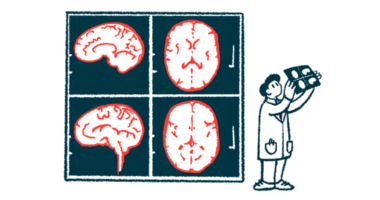Australia, New Zealand get consensus guidelines for MS care
Treatment recommendations focus on when, how to use DMTs

Experts in Australia and New Zealand have published the first consensus guidelines for the care of adults with multiple sclerosis (MS) in those countries, a step designed to help general practitioners and neurologists navigate the new MS treatment landscape.
“Through these guidelines, we aim to support safe, timely and effective management of patients with MS in Australia and New Zealand,” researchers wrote in the two-part guidelines, “Consensus recommendations on multiple sclerosis management in Australia and New Zealand,” which were published in the Medical Journal of Australia.
MS is caused by inflammation that damages nerve fibers in the brain and spinal cord. This nerve damage leads to problems with normal neurological signaling, ultimately giving rise to MS symptoms. MS is a complex, chronic disease, and it affects every person differently.
There isn’t a cure for MS, but there are disease-modifying treatments (DMTs), medications that have been proven to reduce the rate of relapses, the development MRI lesions, and/or the progression of disability.
Consensus guidelines stress communication
The first part of the guidelines, which were developed based on consensus recommendations from dozens of MS experts, focuses on the use of DMTs in MS.
The guidelines stress that, when choosing which DMT to use, it’s necessary to have in-depth discussions about risks, benefits, and expectations. Some DMTs are very powerful but can carry substantial safety risks, whereas others are less potent but generally safer.
DMTs also differ by route of administration. Some are taken orally, while others are injected under the skin or infused into the bloodstream. To identify the right DMT for each individual, it’s necessary to consider the therapy’s profile holistically with the person’s specific situation.
The guidelines state that DMTs should be started as soon as possible in people with relapsing-remitting MS (RRMS), which is the most common form of the disease. Generally, high-efficacy DMTs are preferred because they are better at limiting disease progression, though individual factors and preferences need to be considered.
“New disease-modifying therapies are more effective and better tolerated,” Mastura Monif, a co-author of the guidelines and associate professor at Monash University, said in a university news story. “But it’s a much more complex treatment landscape than it was 20 years ago, and there is new evidence being generated all the time on many aspects of the disease. It is really important that the approach used is focused on both the effectiveness and safety for the individual so they can get the best possible outcome.”
For progressive forms of MS, there’s not as much data suggesting that DMTs can limit disability progression. The guidelines highlight a need to carefully consider the risks of treatment against the uncertainty of efficacy when deciding on treatments to use in these forms of the disease.
In addition to safety and efficacy profiles, the guidelines highlight a need to consider factors surrounding access, such as whether individual medicines are subsidized for use in particular MS types.
The guidelines also offer advice about when it may be worthwhile to consider switching from one DMT to another, particularly if a patient is experiencing substantial disease activity despite being on a DMT for long enough for it to be fully effective.
All current DMTs for MS work by suppressing the immune system. This can help to limit MS-driving inflammation, but it may also increase the risk of infections and cancer. The second part of the guidelines covers steps that should be taken to mitigate risks from DMTs, as well as considerations for DMT use during pregnancy in MS.
One of the most important aspects of DMT risk mitigation is to ensure that, wherever possible, patients receive all recommended vaccinations before starting DMT treatment. This can help limit the risk of serious infections. Routine screenings for infections and cancers are also recommended.
DMTs and pregnancy
For people with MS who choose to become pregnant, the guidelines stress that an individualized approach is optimal, depending on each patient’s situation and the DMTs in question.
Some DMTs are known to cause risks to a developing fetus if used in pregnancy, while for others there isn’t robust data on whether or not they can be safely used during pregnancy. The guidelines recommend making patients aware of the risks and benefits of continuing treatment during pregnancy.
If treatment is paused during pregnancy, patients should resume treatment soon after the pregnancy ends, though individual factors like plans for breastfeeding need to be considered, the experts said.
The guidelines also highlight lifestyle considerations that may be important for people with MS. Smoking, for example, can worsen MS progression, so MS patients who smoke are strongly advised to quit. It’s also recommended that MS patients get regular exercise and eat a well-balanced diet, though there isn’t any specific dietary pattern recommended for people with MS.
“The new guidelines will be an invaluable resource, especially for generalist clinicians navigating this rapidly evolving field,” said Rohan Greenland, CEO of MS Australia. “They provide a clear and ready reference to best-practice evidence and expert consensus — an important milestone in MS care in Australia.”








